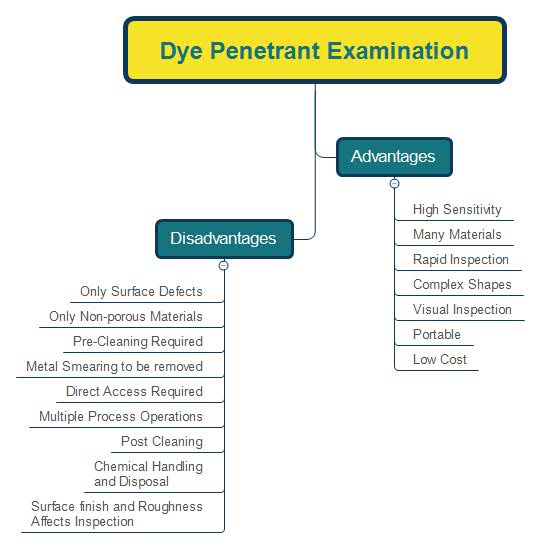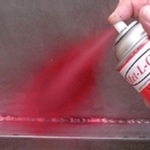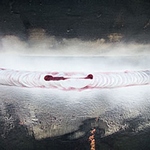Dye penetration inspection has it own advantages and disadvantages compared to other non-destructive testing methods.

[google-square-ad]
ADVANTAGES
- Inspection with this method is of low cost (materials and associated equipment are relatively inexpensive)
- It is possible to do rapid inspection of large areas and volumes.
- It has high sensitivity (small discontinuities can be detected).
- This method is suitable for parts with complex shapes.
- Equipment is highly portable (materials are available in aerosol spray cans).
- Various types of materials can be inspected such as metallic and nonmetallic, magnetic and nonmagnetic, and conductive and non-conductive materials may be inspected.
- Indications are produced directly on the surface of the part and constitute a visual representation of the flaw.
DISADVANTAGES
- With this method, only surface breaking defects can be detected.
- It is possible to inspect only materials with relatively nonporous surface.
- It is necessary to pre-clean the material since contaminants can mask defects.
- Metal smearing from machining, grinding, and grit or vapor blasting must be removed.
- Direct access to the surface being inspected is necessary.
- Surface finish and roughness can affect inspection sensitivity.
- It is necessary to perform and control multiple process operations.
- Post cleaning of acceptable parts or materials is required.
- This method involves chemical handling and its proper disposal.
[google-square-ad]
Related Posts
 |  | |
| This is one of the oldest and very simple NDT examination. It is also known …Read More.. | ||
 |  | |
| Liquid penetrant inspection is used to detect any surface-connected discontinuities such as cracks from fatigue, …Read More.. | ||
